Denisa Štefanigová & Miroslava Večeřová
Galerie U Betlémské kaple, Prague
13. 11. – 15. 12. 2024
Curated by Martina Mrázová
Photo Sofia Sováková
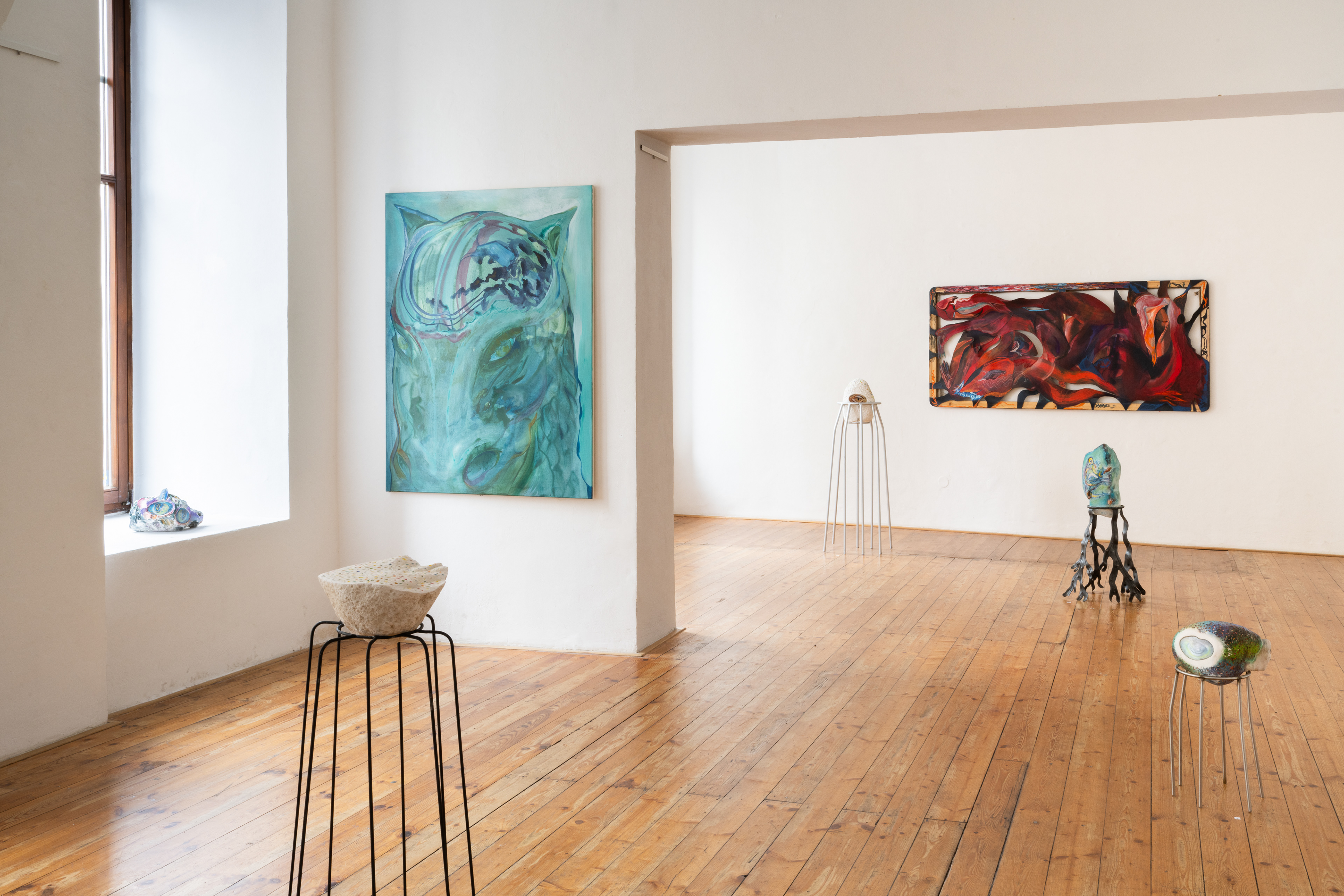
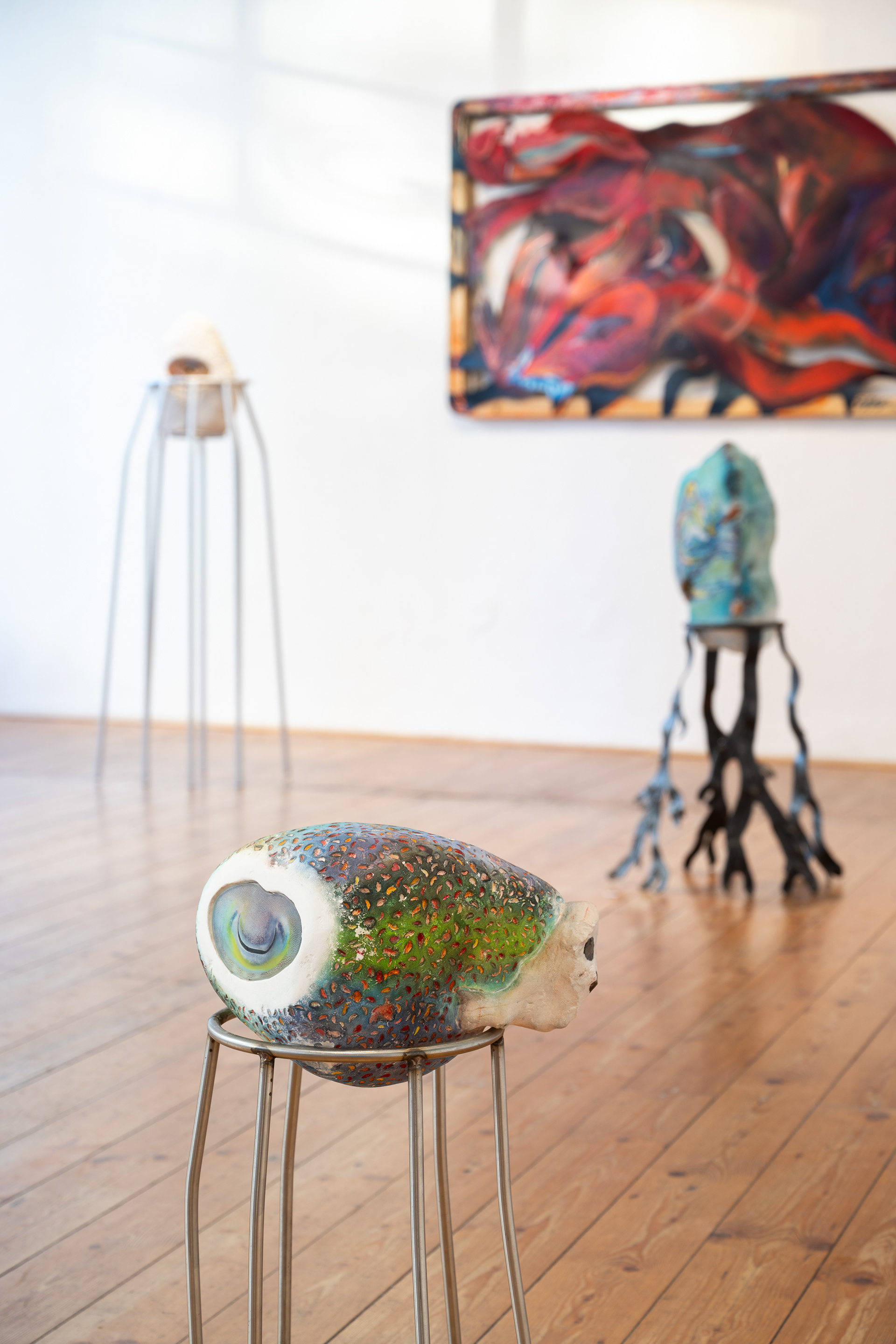
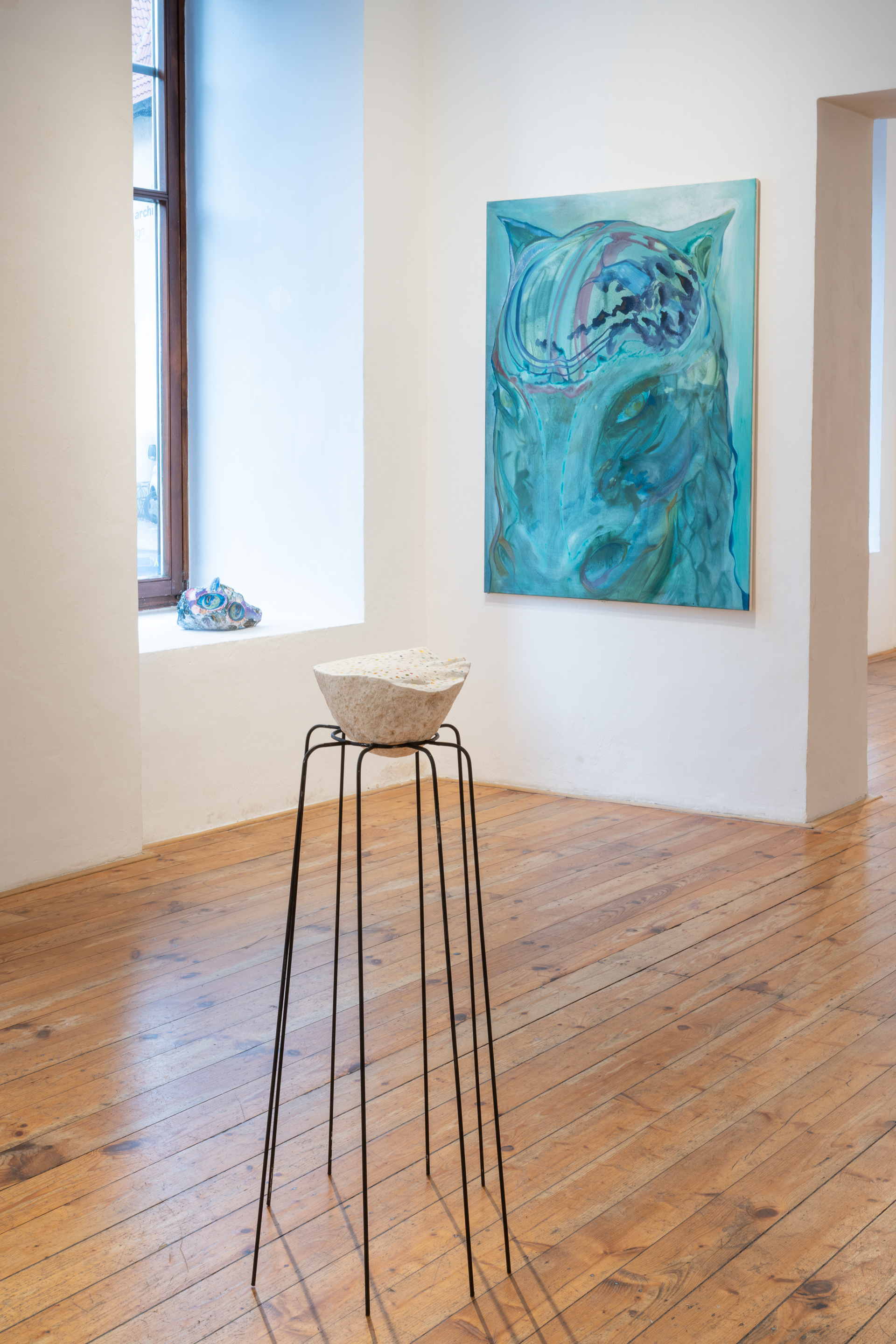
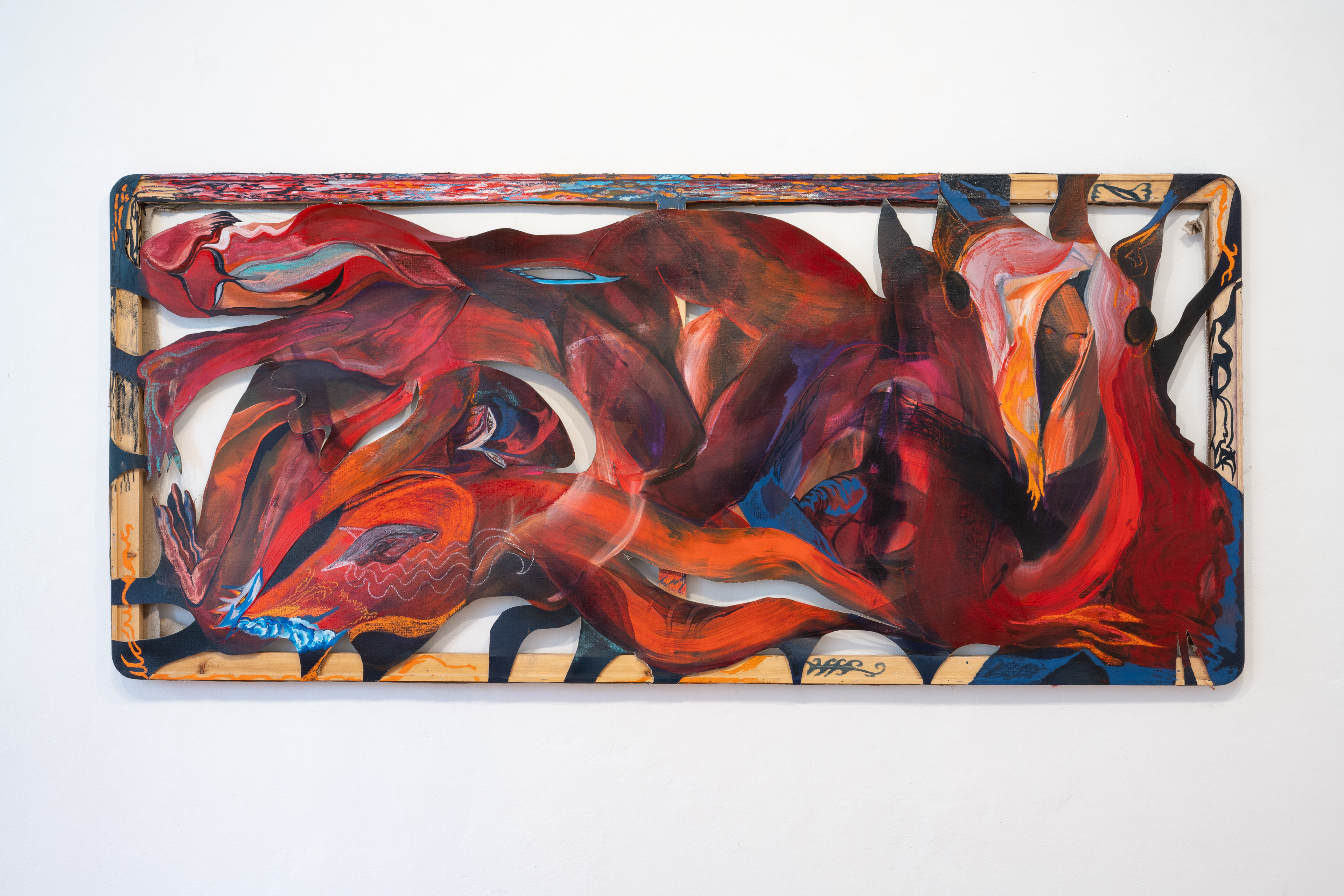
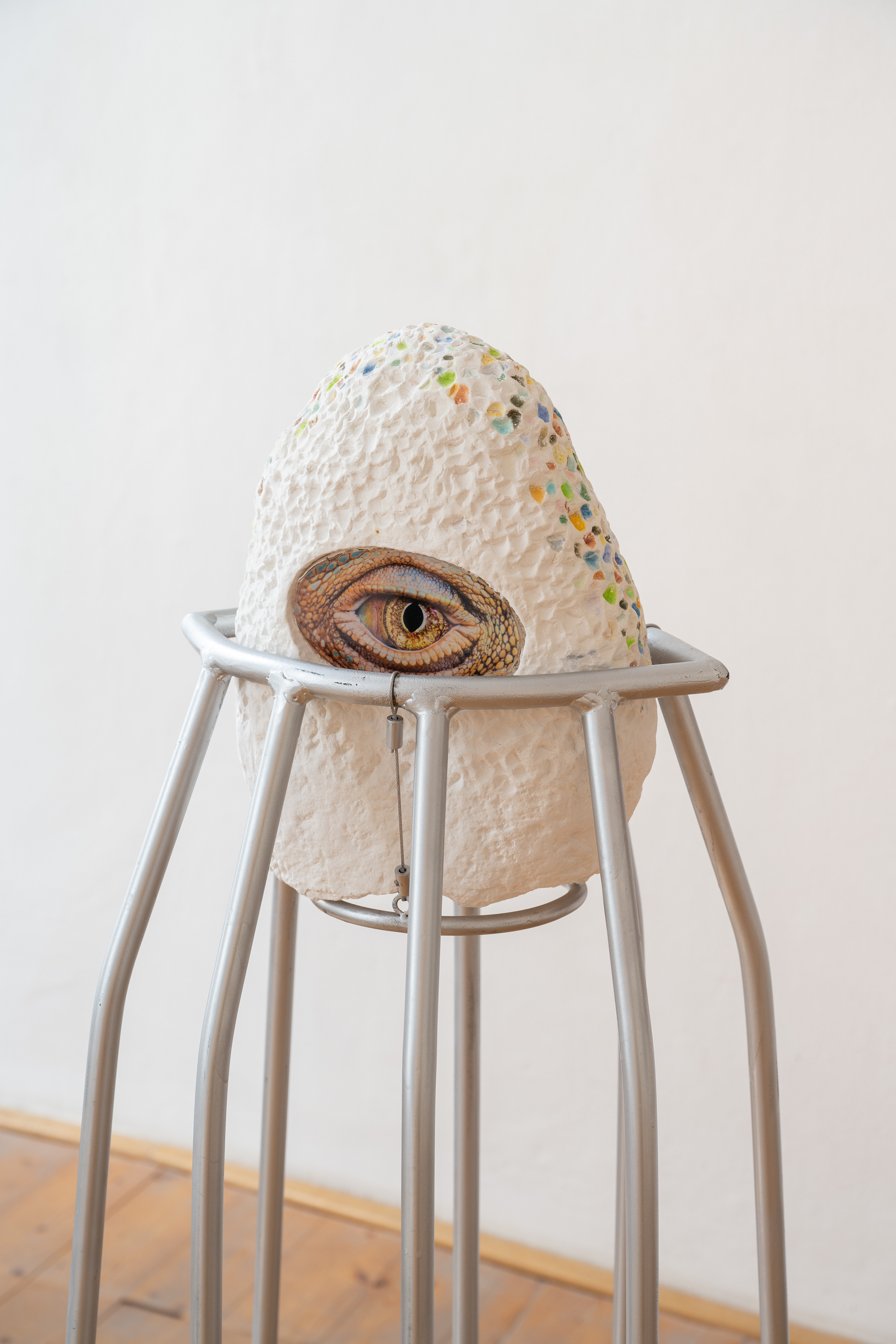
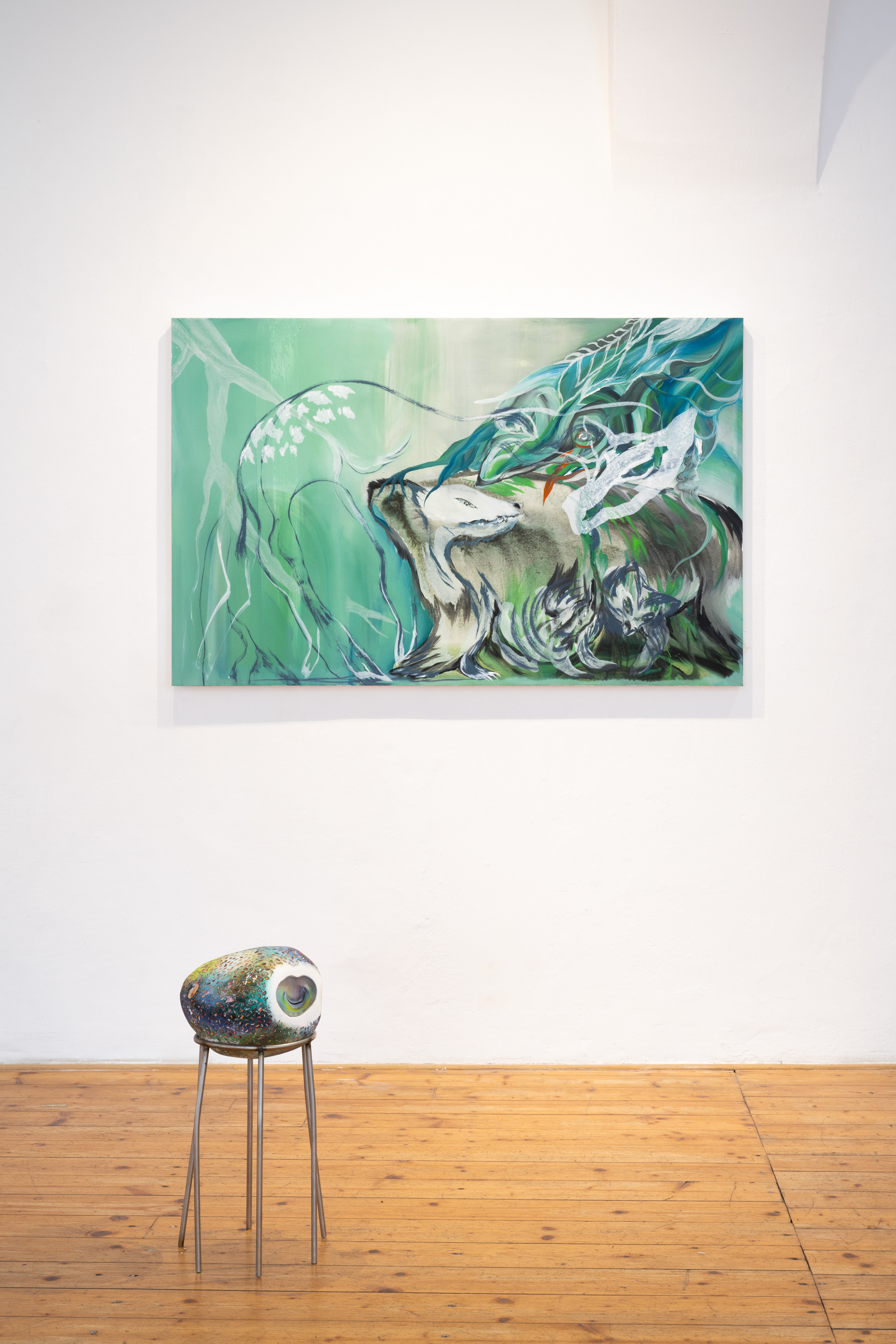
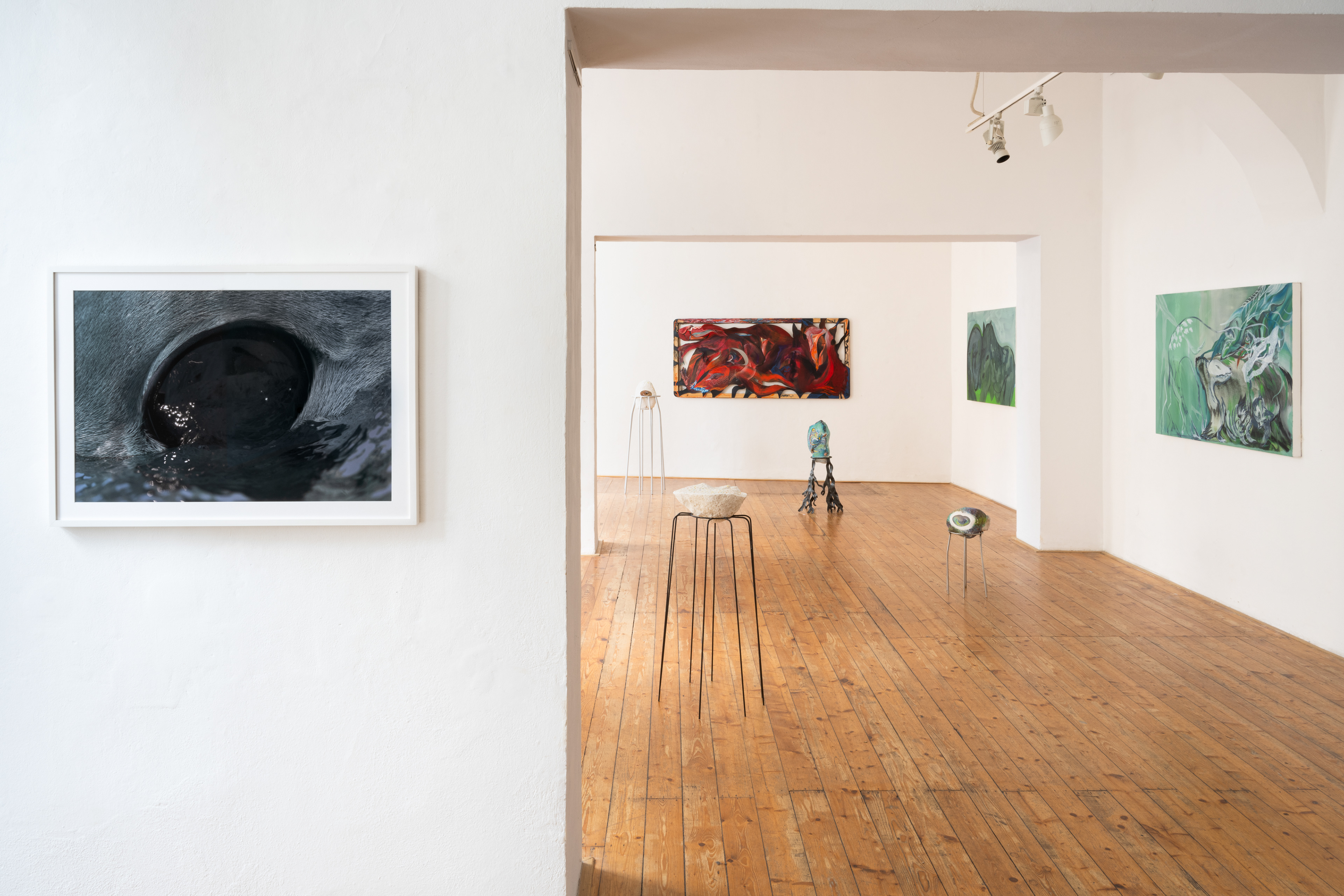
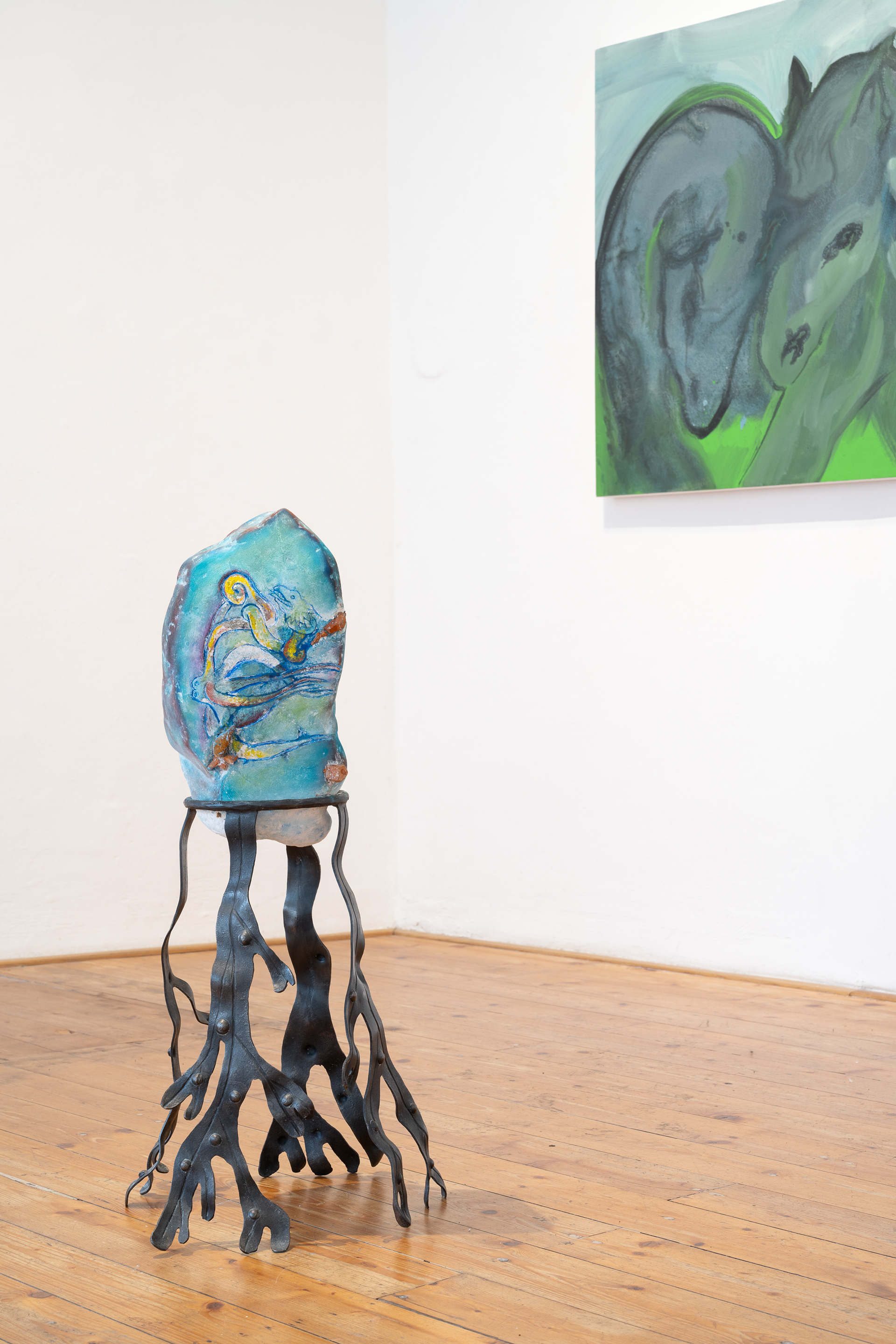
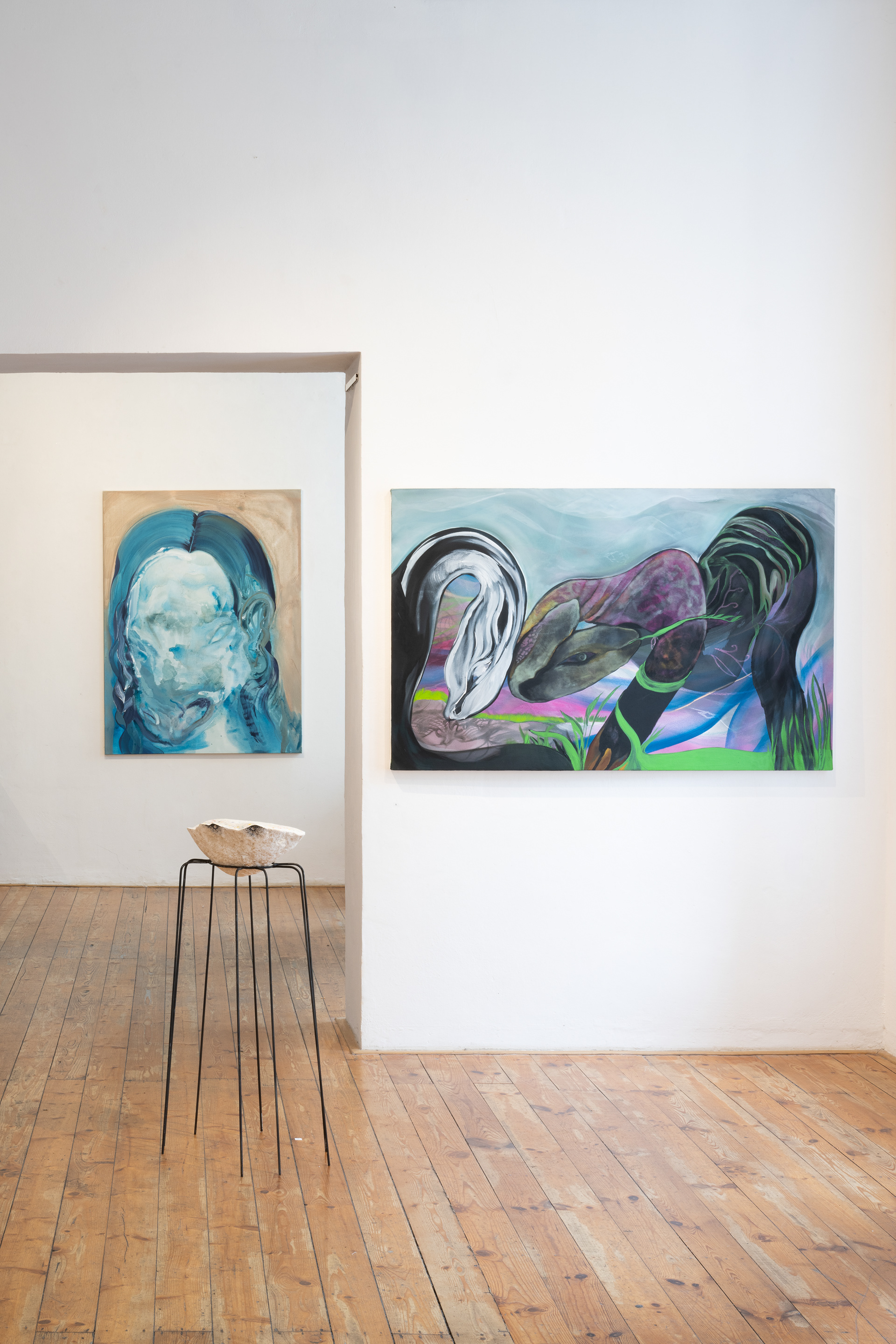

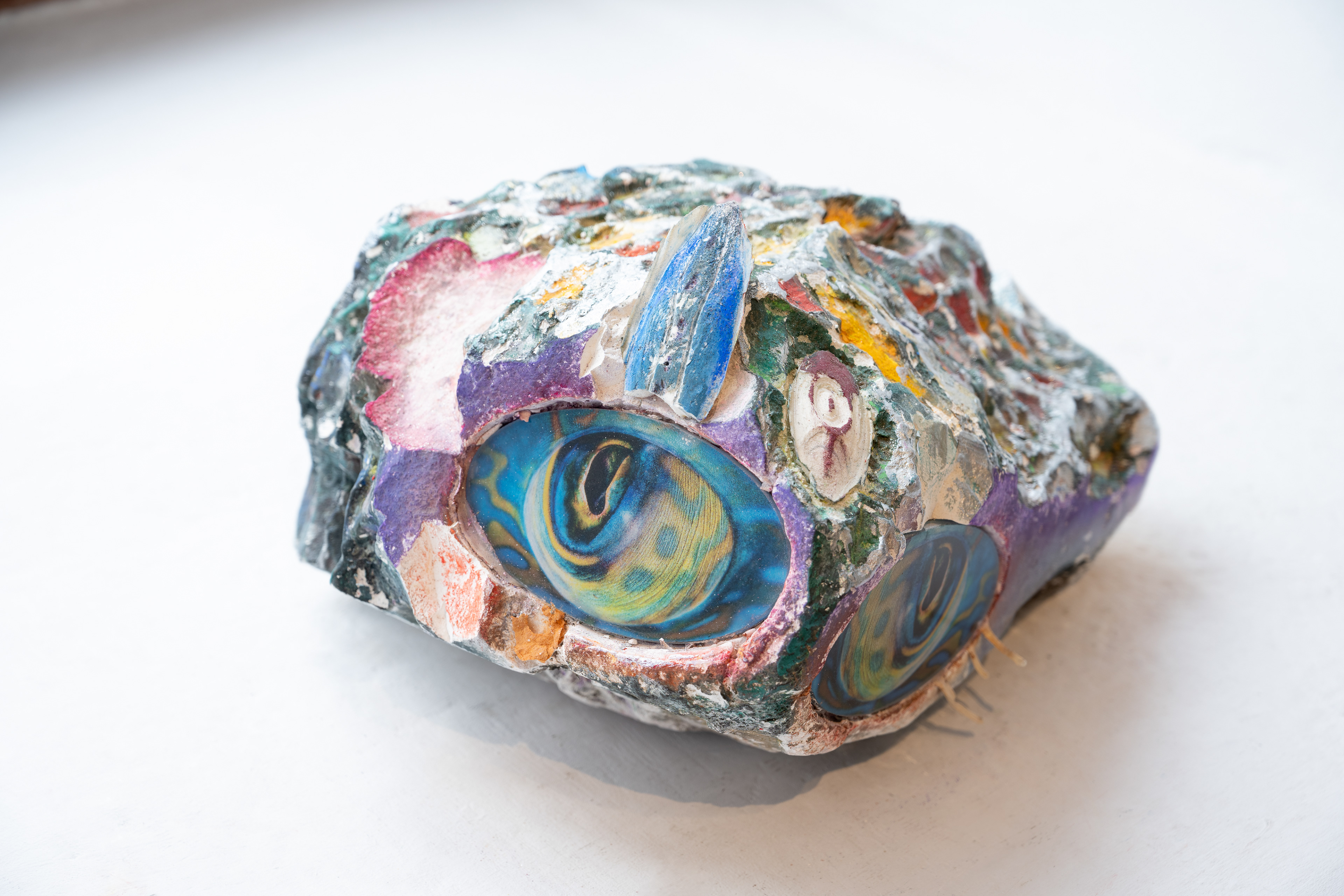
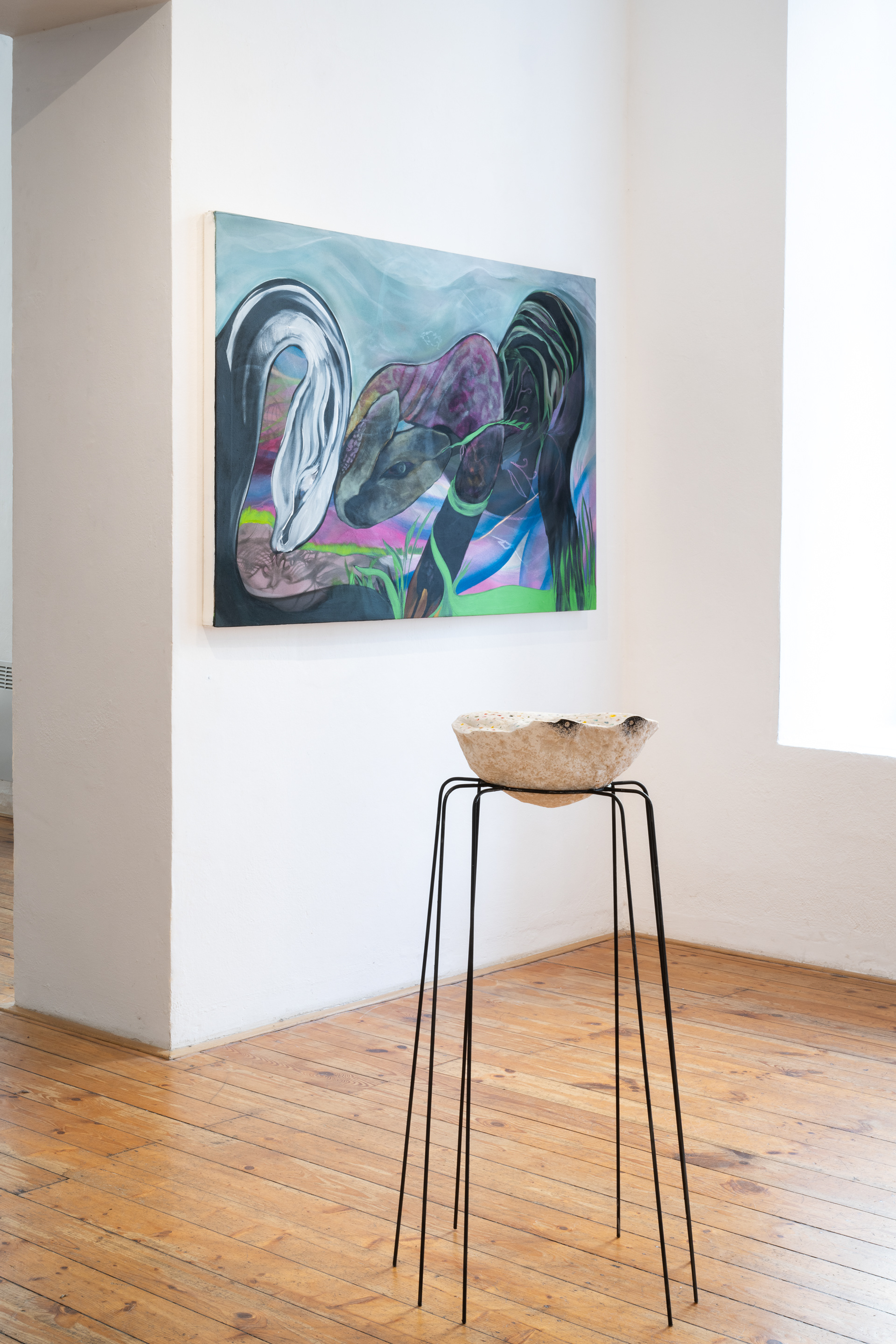
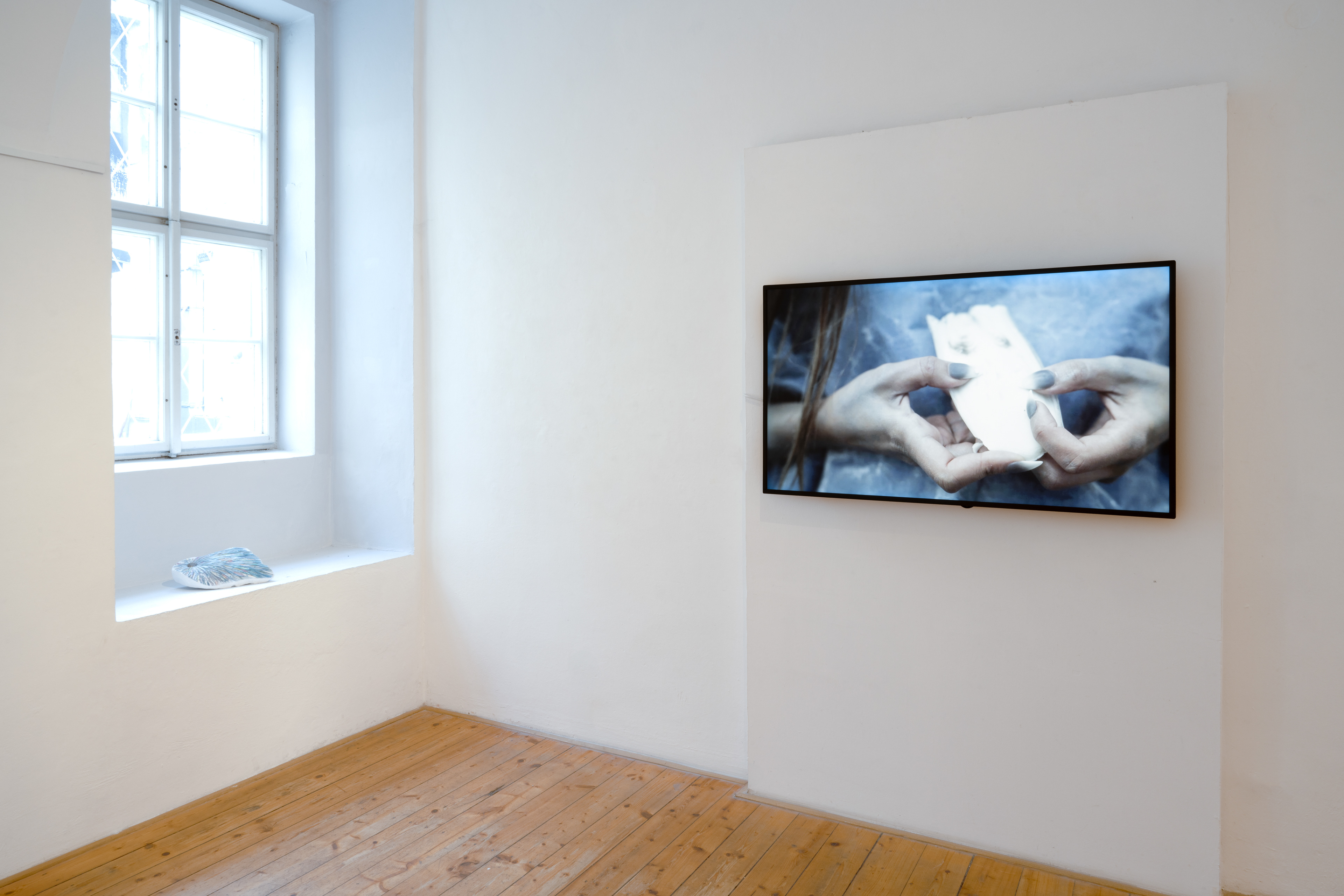
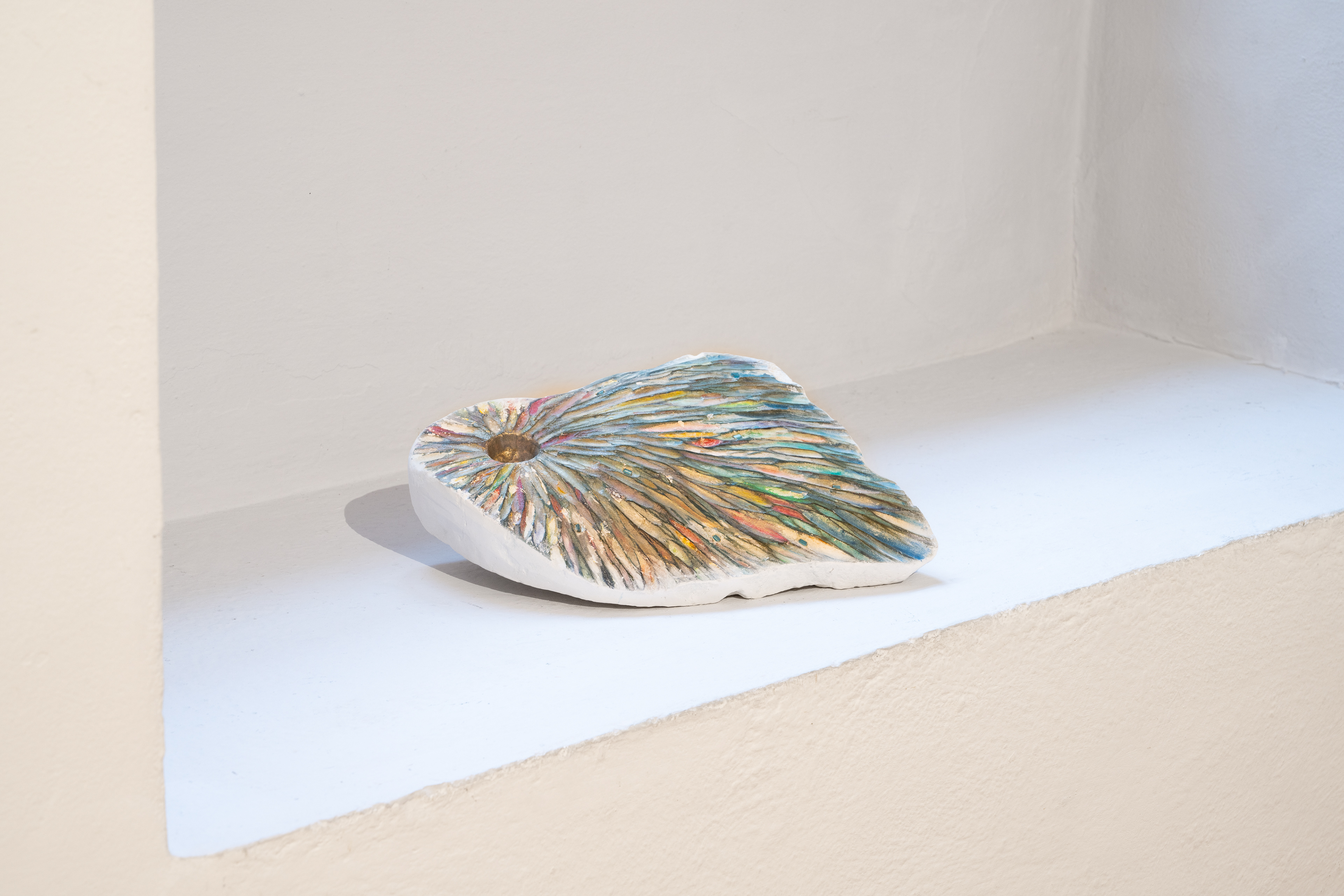
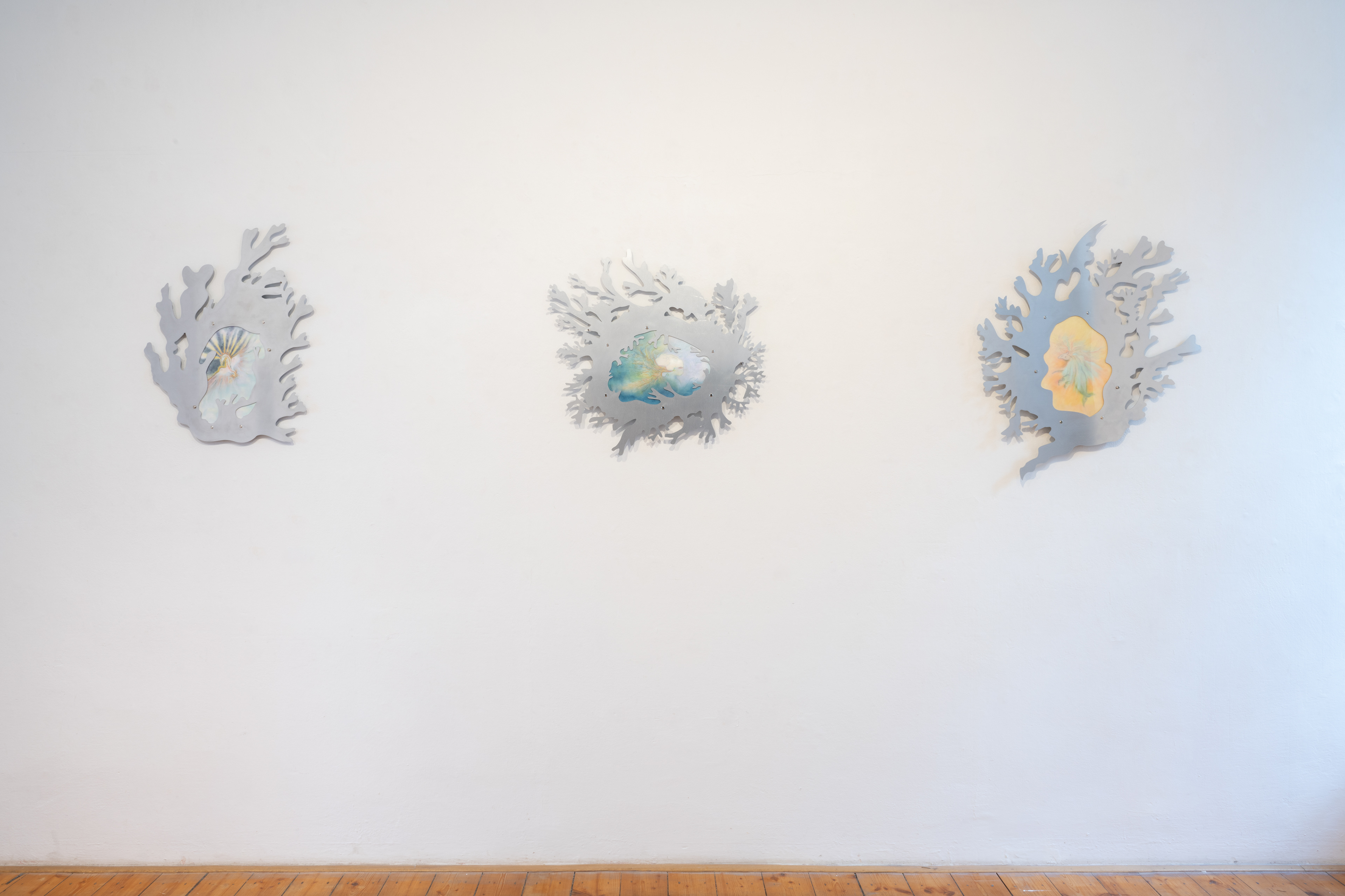

Obejmu tě svým pohledem a ty zase pohledem obejmeš mě. Pomalu a zvědavě nahlížíme jeden do druhého a láskyplně ohmatáváme své vnitřní světy. Nemusím čekat, až promluvíš, abych se teprve potom dostala ke slovu a mohla ti odpovědět. Nemusím dokonce ani znát tvůj jazyk. Navzájem sdílíme své pocity a myšlenky a v záblesku oka toho druhého spatřujeme i svůj vlastní obraz. Ve vztahu s druhými poznáváme sami sebe.
Výstava intermediální umělkyně Miroslavy Večeřové a malířky Denisy Štefanigové ohledává možnosti sdílení a propojení s jinými bytostmi. Bezprostřednost, upřímnost a intimita očního kontaktu se umělkyním stává metaforou pro alternativní způsoby komunikace a poznání, které se na rozdíl od racionalistického západního diskurzu nepojí s tendencí vměstnat univerzum do norem a vzorců ve snaze vše ovládnout a kontrolovat. Prostřednictvím oka jako symbolu vcítění a porozumění, v němž se tělesnost spojuje s emocionalitou a spiritualitou, hledají umělkyně citlivější způsoby interakce a sbližování s druhými bytostmi, ať už lidskými, či nelidskými. Zatímco Denisa Štefanigová vnímá tekutost bytí-s-jinakostí jako proces, který ji vede k pochopení a přijetí sebe sama, Miroslava Večeřová ve své tvorbě oživuje archetypální touhu po spojení s elementárními silami přírody i s jinými bytostmi.
V malbách Denisy Štefanigové se z velkorysých fluidních tahů štětce vynořují přízračné figury, jejichž stylizace někdy postupuje až do oblasti tajemného symbolu či znaku. Tělesné formy, lidské i nelidské, se jakoby samovolně přelévají jedna do druhé a tvoří analogii ke složitě propleteným emocionálním stavům, které jako neovladatelné vlny zaplavují plochu plátna a rozrušují pevné hranice tvarů. Syrově působící malby Štefanigové jsou spjaté především s hledáním osobní identity, jež se uskutečňuje v procesu nekončícího proudu stávání se ve vztazích s ostatními bytostmi. Umělkyně se proto nechává vést vlastní intuicí i tekutostí samotného malířského procesu, který dále akcentuje rozmýváním akrylových barev až do řídkého, vodnatého roztoku, jenž obrazy zahaluje zvláštní atmosférou, připomínající svět pod vodní hladinou. Někdy Štefanigová přistupuje i k radikálnějšímu gestu prořezávání plochy plátna jako k dalšímu kroku při hledání výsledného tvaru, reflektujícího nespoutanost životních sil, jejichž zdroje autorka s upřímností sobě vlastní hledá sama v sobě i v tvůrčím procesu. Personifikacemi těchto sil jsou v jejích malbách antropomorfizované bytosti, které přímo do očí diváka zapichují uhrančivý pohled. Divák je tak vtahován dovnitř malířského procesu a současně se sám stává objektem pozorování. Rovnováha dialogu mezi divákem a malbou, resp. divákem a umělkyní, je tak nastolena.
Na rozdíl od introspektivních maleb Denisy Štefanigové obrací Miroslava Večeřová svou pozornost k přírodnímu prostředí a k našim prapředkům, kteří před dávnými dobami vzešli z hlubin oceánů. Večeřová dlouhodobě žije a tvoří na pobřeží britských ostrovů, neustále obklopená mořem, které výrazně rámuje i její uměleckou tvorbu. V oblastech přílivových zón, v nichž se často bouřlivým způsobem stýká mořský a suchozemský ekosystém, je člověk bezprostředně konfrontován s primárními elementy větru, vody a kamene i s cyklickým rytmem času, přesahujícím život jednotlivce. Tváří v tvář přírodě vyvstávají kosmologické úvahy o původu života na Zemi a dávné animistické a mytologické představy o hybných silách Země, které stírají hranice mezi živou a neživou hmotou i mezi sférou tělesnou a duchovní. Právě skrze tělesnost a materialitu Večeřová hledá cestu k dávno ztracenému napojení na prapůvodní síly přírody a podobně jako David Abram v knize Stávat se zvířetem umělkyně oslavuje „životodárnou rozkoš plynoucí z kontaktu se zemí“.
Miroslava Večeřová sice vystudovala fotografii, v posledních letech se ale věnuje především tvorbě videoperformancí, objektů a kreseb, které jí poskytují větší možnosti práce s vlastní tělesností. Pro své objekty používá jako materiál fragmenty z bílých doverských útesů, které vlivem eroze pomalu odpadávají. Umělkyně křehký materiál sbírá a dále tvaruje vlastními prsty, hladí jej a zarývá se do něj nehty v jakémsi láskyplném archaickém rituálu. Do sedimentární horniny křídy, která se utvářela před miliony let hromaděním schránek uhynulých mikroorganismů, Večeřová symbolicky vrací element vody, když do nich vkládá zvětšené digitální fotografie očí skutečných mořských živočichů. Prostřednictvím vody a vápence, které jsou rovněž základními stavebními kameny lidského těla, nám umělkyně dává možnost přiblížit se podivným tvorům, kteří mohou být stejně tak relikty bájné minulosti jako kouzelnými amulety z daleké budoucnosti.
Elementy vody a vápence jsou určující i pro její další tvorbu, ať už jde o kresby pastelem v rámech připomínajících chaluhy či videoperformance, které lze vnímat jako poetickou metaforu mezidruhového příbuzenství, o němž píše Donna Haraway.
Osobní roviny přístupu Denisy Štefanigové a Miroslavy Večeřové spojuje nejenom důraz na autenticitu tvorby, chápanou jako výraz touhy a okouzlení všemi formami života, ale také zakotvení v ekofeministickém diskurzu, který se zaměřuje na hledání mezidruhové solidarity a udržitelných vztahů, a v obecnější rovině i v konceptu nového materialismu s jeho důrazem na specifickou zkušenost těla.
Martina Mrázová
I’ll hold you with my gaze, and you in turn will hold me with yours. Slowly and curiously we regard one another, and lovingly touch each other’s inner worlds. I don’t need to wait for you to speak before I can answer you. I don’t even need to know your language. We mutually share our feelings and thoughts, and in the glint of the other’s eye we can also see our own image. In our relationship with others we come to know ourselves.
The exhibition of the work of the intermedial artist Miroslava Večeřová and the painter Denisa Štefanigová examines the possibilities of sharing and interconnection with other beings. For the artists, directness, sincerity and intimacy of eye contact become a metaphor for alternative ways of communication and recognition, which by contrast with rationalist Western discourse are not shackled to a tendency to pigeonhole the universe into norms and formulae in an attempt to govern and control everything. Via the eye as a symbol of empathy and understanding, in which physicality is combined with emotion and spirituality, the artists seek more sensitive ways of interaction and bonding with other beings, either human or non-human. While Denisa Štefanigová perceives the fluidity of being-with-otherness as a process that guides her towards an understanding and acceptance of herself, Miroslava Večeřová in her work revives the archetypal desire for communion with the elemental forces of nature and other beings.
In Denisa Štefanigová’s paintings ghostlike figures emerge from the broad, fluid brushstrokes, their stylisation sometimes reaching into the realm of a mysterious symbol or emblem. Physical forms, both human and non-human, appear to flow spontaneously into one another, forming an analogy to complexly interwoven emotional states that flood the surface of the canvas like uncontrollable waves, and disrupt the fixed boundaries of the shapes. Štefanigová’s paintings create a raw impression, and are linked primarily with the search for personal identity that takes place within a process of an endless flow of becoming in relationships with other beings. For this reason, the artist allows herself to be guided by her own intuition and the fluidity of the painting process itself, which she further accentuates by washing the acrylic paints into a thin, watery solution that shrouds the images in a peculiar atmosphere reminiscent of an underwater world. Sometimes she proceeds to the more radical gesture of trimming the surface of the canvas as a further step in the search for the resulting shape, reflecting the untrammelled forces of nature, the sources of which the artist in her endeavour to be true to herself seeks both within herself and within the creative process. The personifications of these forces in her paintings are anthropomorphised beings that fix a penetrating, spellbinding gaze directly at the viewer’s eyes. The viewer is thus drawn inside the painting process, while at the same time becoming the object of observation. The balance of the dialogue between viewer and painting, or viewer and artist, is thus established.
By contrast with Denisa Štefanigová’s introspective paintings, Miroslava Večeřová turns her attention to the natural environment and our primeval ancestors, who emerged from the depths of the oceans in prehistoric times. Večeřová has been living and working for many years on the coast of the British Isles, constantly surrounded by the sea, which also distinctively frames her artistic production. In tidal zones, where marine and terrestrial ecosystems meet in an often tempestuous clash, one is directly confronted with the primary elements of wind, water and stone, as well as with a cyclical rhythm of time that transcends the life of the individual. Face to face with nature, we are invited to engage in cosmological reflections on the origin of life on Earth and ancient animistic and mythological conceptions of the driving forces of the Earth, which blur the boundaries between animate and inanimate matter, and between the physical and spiritual realm. It is precisely through physicality and materiality that Večeřová seeks a path to a long-lost connection to the primeval forces of nature, and similarly to David Abram in his book Becoming Animal the artist celebrates the “enlivening pleasure of earthly contact.”
Although Miroslava Večeřová studied photography, in recent years she has focused primarily on creating video performances, objects and drawings which provide her with greater opportunities to work with her own physicality. She uses fragments of the White Cliffs of Dover that have slowly fallen off due to the impact of erosion as material for her objects. The artist collects the fragile material and further shapes it with her own fingers, caresses it and carves her fingernails into it in a kind of loving archaic ritual. Večeřová symbolically returns the element of water into this sedimentary rock, which was formed millions of years ago through the accumulation of the shells of dead micro-organisms, by inserting into it enlarged digital photographs of the eyes of actual sea creatures. Through the means of water and limestone, which are also the fundamental building blocks of the human body, the artist provides us with the opportunity to approach these strange creatures, which could be relics of a mythical past or equally magical amulets from a distant future.
The elements of water and limestone are defining also for her other work, whether this concerns her pastel drawings within frames resembling kelp or her video performances, which can be viewed as a poetic metaphor of an interspecies kinship, as written about by Donna Haraway.
The personal levels of the approach of both Denisa Štefanigová and Miroslava Večeřová are linked not only by their emphasis on the authenticity of their creation, conceived as an expression of desire and enchantment with all forms of life, but also in their anchoring in ecofeminist discourse, which focuses on a search for interspecies solidarity and sustainable relationships, and on a more general level also in the concept of a new materialism with emphasis on the specific experience of the body.
Martina Mrázová
Translated by Ashley Davies